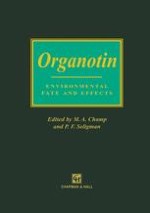1996 | OriginalPaper | Buchkapitel
Regulatory Policies and Strategies for Organotin Compounds
verfasst von : Michael A. Champ, Terry L. Wade
Erschienen in: Organotin
Verlag: Springer Netherlands
Enthalten in: Professional Book Archive
Aktivieren Sie unsere intelligente Suche, um passende Fachinhalte oder Patente zu finden.
Wählen Sie Textabschnitte aus um mit Künstlicher Intelligenz passenden Patente zu finden. powered by
Markieren Sie Textabschnitte, um KI-gestützt weitere passende Inhalte zu finden. powered by
An historical overview of the use of organotin compounds as biocides in antifouling boat-bottom paints as well as a wide range of national and international regulatory and legislative options for policy and decision makers is presented and discussed in this chapter. The discussion includes the US Antifouling Paint Control Act of 1988 as well as international regulatory policies and practices from the United Kingdom, France, Switzerland, Germany, Japan, the Commission of the European Communities, and international conventions. The impact of present regulatory policies and practices are reviewed in accordance with economic and environmental costs and benefits, such as the effectiveness of regulations by developed countries at reducing local environmental concentrations as well as the shift of organotin-related environmental hazards (and associated economic loss of shipyard business in developed countries) to lesser developed countries (due to inexpensive labor and less stringent environmental regulations), which could be referred to as the transfer of contamination to those countries least able to deal with it. The following regulatory options are recommended as the most promising: (1) limit the release rate of organotin compound(s) used in copolymer antifouling paints to the adjacent water column and national water quality standards; (2) restrict the use of organotin compounds on mariculture structures, piers, and utility cooling water intake and discharge pipes; (3) develop a special antifouling coating R&D user’s port and harbor dockage fee(s); and (4) institute a vessel certification system by the International Maritime Organization for vessels using toxic antifouling coatings to provide a source of funding for the development of national research and development (R&D) programs for the most cost-effective handling, collection, storage, treatment, processing, and disposal of hazardous and toxic antifouling paint wastes from ships, dry-docks, and contaminated bottom sediments.
